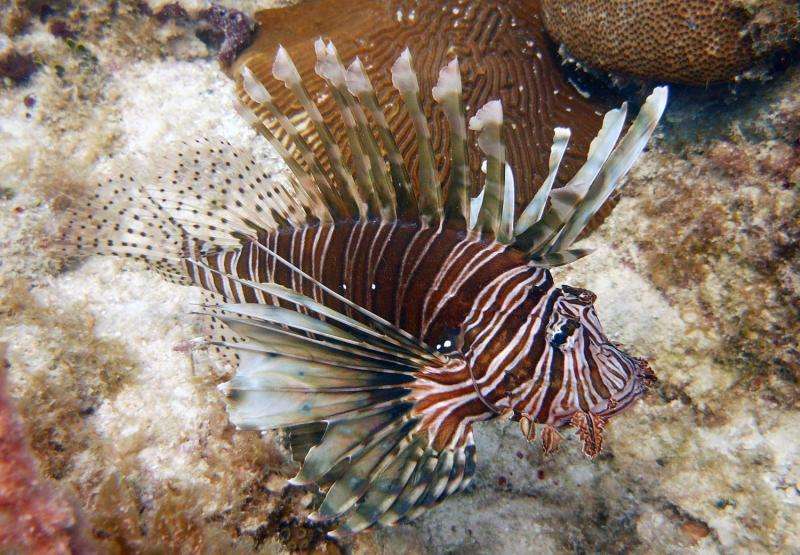Researchers find more strategic culling needed to reduce lionfish invasion

We've all seen the stories - lionfish derbies and other efforts are ongoing in the United States and Caribbean, all with the goal of helping to decrease the number of highly invasive and ecologically devastating lionfish in our oceans. A new analysis published in the journal Marine Ecology Progress Series now suggests that unfortunately, the existing typically localized and intermittent derby efforts are barely making a dent in reducing overall lionfish numbers and containing their spread. This is because the culling effort is too small and locations for culling are chosen without taking into consideration direction of currents which can carry lionfish larvae to downstream regions far away.
"For every lionfish we remove during local derbies or spearfishing, there are probably hundreds of others we miss," said Matthew Johnston, Ph.D., of Nova Southeastern University's Halmos College of Natural Sciences and Oceanography. "What is really needed to lower their numbers is consistent removal of the fish in all places they live - deep, shallow, remote - and of all ages. Derbies and spearfishing only target adult fish in shallow water. Unfortunately, that's simply not enough, and to be effective we also have to consider the impact of currents that spread the lionfish larvae."
Dr. Johnston and fellow researcher Sam Purkis, Ph.D. have been studying invasive species for quite some time, with a particular focus on lionfish. Their computer models combine ocean currents and biological traits of lionfish to predict their spread. Lionfish have shown they can take over - and in some cases devastate - a coral reef ecosystem as they do not have any natural predators in the waters of the United States and the Caribbean. The research is showing that lionfish are spreading as all of our waters are connected by ocean currents.
"We're all connected by water flow," Dr. Johnston said. "That means one area that has uncontrolled lionfish populations can dramatically increase lionfish numbers in nations downstream."
In this new study, Drs. Johnston and Purkis estimated the amount of culling that would be needed to be effective at reducing lionfish numbers. They found that control efforts would require regular removal of at least 20% of the population per month in an area that had a lot of lionfish, but would also require the same level of culling in regions upstream to "choke off" the supply of larvae carried by currents. Furthermore, this culling would need to target all lionfish (large and small animals, those living in deep and remote waters).
Dr. Johnston added that an important part of the solution should be international cooperation between the affected nations (i.e. the entire Caribbean, the U.S., Mexico, Central and South America.) He said coming together to address the issue is urgently needed as it would benefit every nation plagued with lionfish.
"The culling we're doing now with local derbies is helping, but it's really a drop in the proverbial bucket, he said. "If we're to have a significant impact on the lionfish population, we need to be more strategic in our removal efforts and find more ways of removing them from all of our waters, and do it consistently."
One example of how ocean currents help spread lionfish can be seen in earlier research conducted by Drs. Johnston and Purkis. Their research found that hurricanes and other tropical storms help accelerate the spread of these exotic fish by impacting the flow of water in the Florida Straits. Normally ocean currents represent a potential barrier to the transport of lionfish eggs and larvae across the Florida Straits. But as a hurricane passes, the flow of water shifts from a strong, northern flow to a strong, eastern flow. It's these changes in flow direction and speed that likely carry lionfish larvae and eggs from Florida to the Bahamas and can explain how lionfish were able to cross the Gulf Stream so soon after their introduction to South Florida waters.
More information: Marine Ecology Progress Series, dx.doi.org/10.3354/meps11399
Journal information: Marine Ecology Progress Series
Provided by Nova Southeastern University



















